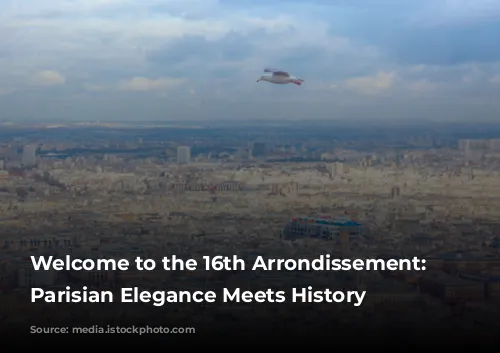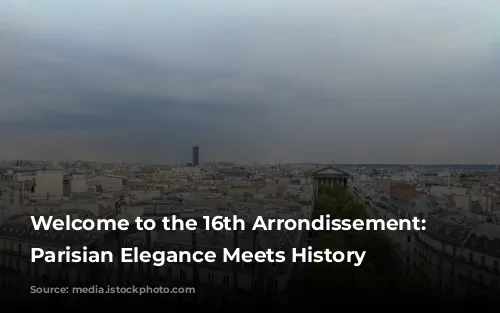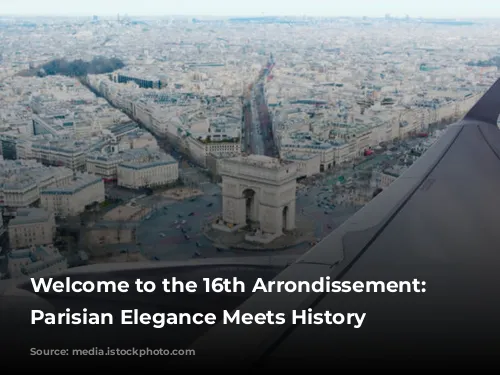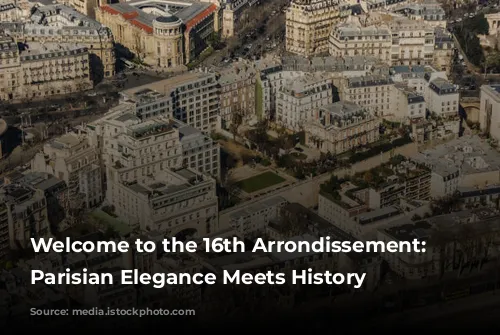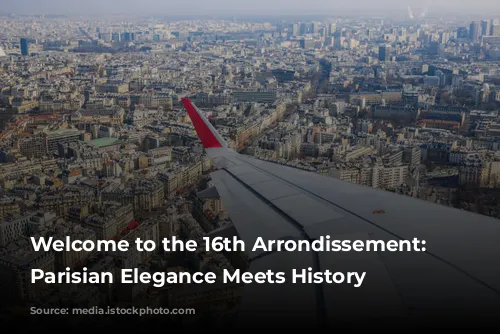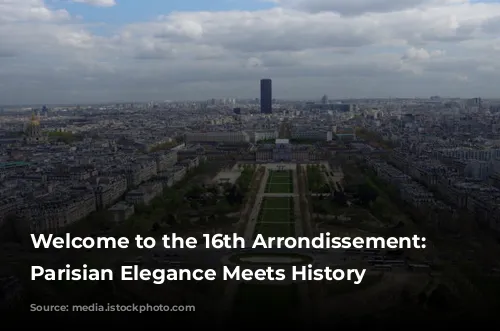The 16th arrondissement of Paris is a captivating district brimming with history, culture, and prestige. Nestled on the Right Bank, it sits comfortably adjacent to the 8th and 17th arrondissements while sharing a border with the picturesque town of Boulogne-Billancourt. Across the Seine River, you’ll find the 7th and 15th arrondissements, adding to the area’s vibrant tapestry.
This arrondissement is a feast for the senses, with its grand 19th-century buildings, sprawling avenues, and renowned cultural institutions. The Arc de Triomphe, a majestic monument, stands proudly at the intersection with the 8th and 17th arrondissements. And then there’s the Place du Trocadéro, a magnificent square that serves as a backdrop to the Palais de Chaillot, home to three museums and a theater. The Louis Vuitton Foundation, opened in 2014, adds to the district’s already impressive artistic offerings.
A Haven for the Elite: Parisian Luxury & History
The 16th arrondissement has long been associated with Parisian high society, a reputation earned through its impressive architecture, prestigious schools, and luxurious parks. It’s the French equivalent of London’s Kensington and Chelsea or Berlin’s Charlottenburg, attracting those seeking the finer things in life. In fact, the 16th arrondissement consistently ranks among the wealthiest districts in France, trailing only the city’s 7th arrondissement and the adjacent suburb of Neuilly-sur-Seine. This affluence has earned it the nickname “le 16e,” a phrase synonymous with wealth in French popular culture.
Beyond the Opulence: Sports, Parks, and a Rich Past
But there’s more to the 16th arrondissement than just luxury. This district is also home to several significant sporting venues, including the Parc des Princes, home to the renowned Paris Saint-Germain football club. The Roland Garros Stadium, where the prestigious French Open tennis championships are held, also resides within the district’s boundaries. And for rugby enthusiasts, the Stade Jean-Bouin, home to the Stade Français rugby union club, provides thrilling moments of sporting action.
And let’s not forget the Bois de Boulogne, the second-largest public park in Paris, a verdant escape from the city’s hustle and bustle. It’s this green oasis, along with the 16th arrondissement’s rich history, that gives the district a unique character.
A District Born from Villages: A Story of Transformation
The 16th arrondissement wasn’t always a haven for the wealthy. It was formed in 1859 by incorporating the villages of Auteuil, Passy, and Chaillot, communities that had become communes after the French Revolution. These villages initially were slated to become the 13th arrondissement, but the affluent residents who moved in preferred a different number, pushing for the 16th. The “unlucky” 13th was then assigned to another area.
The 16th arrondissement is also the largest district in Paris in terms of land area, with the Bois de Boulogne covering more than half its total size. It’s a reminder of the district’s roots and the way it’s transformed over the years.
A Thriving Community: From History to Modernity
The 16th arrondissement continues to be a vibrant hub of activity. While the population peaked in 1962 at 227,418, it still boasts a significant population of 169,372 (as per the 2009 census). This district is not only a residential area but a major economic center, housing a wide range of businesses, including Lacoste, PSA Peugeot Citroën, and Lagardère.
The district’s history is etched in its buildings, avenues, and even its real estate. The famous Auteuil “villas,” exclusive gated communities with grand houses and sprawling gardens, offer a glimpse into the area’s wealthy past. The Auteuil-Neuilly-Passy moniker, commonly used to refer to the area, exemplifies its status as one of the most affluent neighborhoods in Paris. The 16th arrondissement is also the only arrondissement in Paris to have two separate postal codes, with the southern part using 75016 and the northern part using 75116, reflecting the district’s distinctive layout.
A Place of Political Significance: Shaping French Politics
The 16th arrondissement is not just a wealthy district but a place of political weight, known for its strong support of the French right-wing. In the 2017 French presidential election, the district overwhelmingly favored the right-wing candidate François Fillon in the first round. This illustrates the area’s long-standing alignment with conservative values.
A District of Global Culture: From Film Sets to International Schools
The 16th arrondissement has also played a significant role in popular culture. Its unique blend of grandeur and history has made it a popular location for filmmakers, with scenes from Thunderball (1965), Last Tango in Paris (1972), and Mission: Impossible – Fallout (2018) being filmed within its boundaries.
This district is also home to an array of international schools, providing a diverse educational landscape. The Russian Embassy School of Paris, the Colegio Español Federico García Lorca, and the International School of Paris are just a few examples. And of course, there’s Paris Dauphine University and Paris Institute of Technology, adding to the area’s intellectual reputation.
A Glimpse into the 16th Arrondissement: A Unique Parisian Experience
The 16th arrondissement is a fascinating district, combining Parisian elegance with historical charm. From its opulent architecture and renowned museums to its bustling business district and prestigious schools, this area offers a glimpse into the heart of French culture. Whether you’re a history buff, an art enthusiast, or simply someone who appreciates the finer things in life, the 16th arrondissement is sure to captivate your senses.
